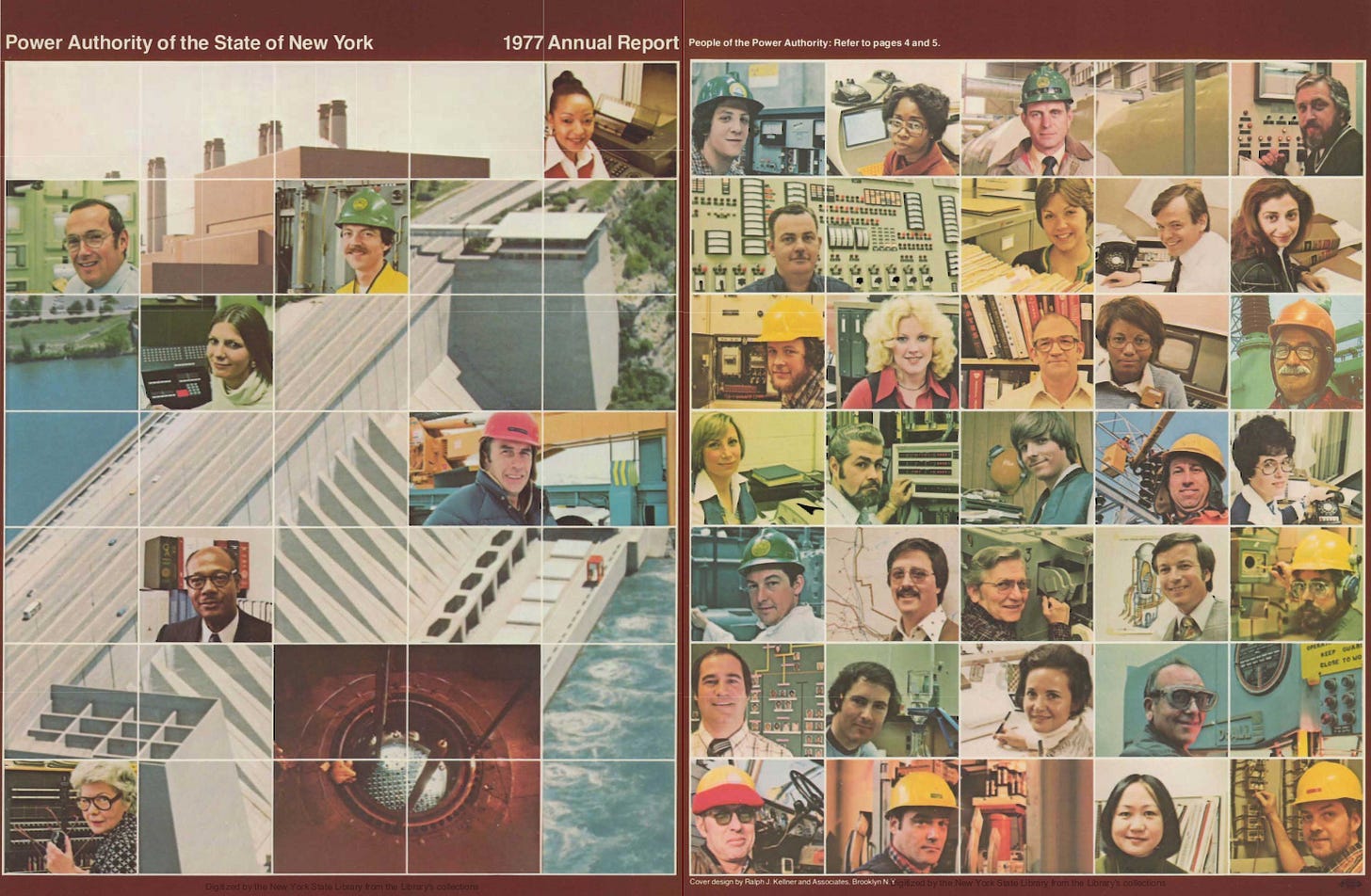Public comment on NYPA's strategic plan for renewables
NYPA has done a fantastic job kickstarting renewables development. Taking over the Clean Path NY transmission project should be a new priority in its strategic plan.
Monday, December 9th, is the last day that the New York Power Authority is accepting public comments on the draft of its inaugural NYPA Renewables Strategic Plan, in accordance with its recently expanded authority that has been covered extensively on Public Power Review.
Much to my surprise, NYPA has announced a portfolio of 3.5 GW of wind, solar, and battery projects. Most of these are the result of NYPA partnering with existing projects in the very long, very backlogged NYISO interconnection queue, priority projects that NYPA has identified using its decades-old engineering expertise. NYPA will be taking majority if not total ownership of each such project. Some, however, are “self developed” projects from NYPA.
Despite that substantive progress, the legislators and activists that provided the motive force for NYPA’s expanded authority, through their Build Public Renewables campaign, are channeling thousands of public comments into dissatisfaction, with an assist from Rep. Alexandria Ocasio-Cortez. To paraphrase their argument: “3.5 GW isn’t cool. You know what’s cool? 15 GW.” (To more accurately reflect the messaging, replace the adjective “cool” with the morally charged description “going to save the planet.”)
To my mind, this is a fantastical and pointless target, based on the activists’ analysis of a modeling study they commissioned. 3.5 GW is nothing to shake a stick at, especially for an institution that is starting from scratch in a mature field.
Instead, I think public power advocates ought to argue for a less quantitative, more qualitative strategic priority for NYPA: it should take over and finish the Clean Path NY transmission project.
Below is the public comment on the draft plan that I’ve sent NYPA as part of the process. Readers in New York State are encouraged to copy-paste the comment in its entirety and submit it via email to StrategicPlanComments@nypa.gov, after removing the sentence about myself and changing the signature, of course.
To Whom It May Concern,
Thank you for soliciting public comment on the NYPA Renewables Draft Strategic Plan. I am an independent writer and researcher on the electric power sector and on public power in particular. I would like to raise three points in this comment.
First, the portfolio of 3.5 GW of potential projects is a surprising achievement. Public servants at NYPA should be commended for the incredible progress they’ve made carrying out their new expanded authority to build renewables, especially given the fact they started from scratch entering this already-mature field. Moreover, the Draft Strategic Plan is filled with critical information on financial and legal concerns that would benefit public power authorities across the nation.
Second, to advance its Strategic Plan while also making a massive contribution to decarbonizing New York City’s power, NYPA should investigate taking over the Clean Path NY transmission project whose contract with the state was recently cancelled [1]. Since NYPA was already a minority partner in the project; since the constituent wind and solar projects already have permits and/or steel in the ground; since some of those projects may already be part of NYPA’s current portfolio; since NYPA has decades of expertise designing, building, and operating transmission lines; and since, critically, the viability of the project always depended on NYPA’s Blenheim-Gilboa pumped hydro storage facility, NYPA would be the natural entity to see it through as part of state energy needs.
To take over Clean Path NY, NYPA would surely need to directly enter into a Tier 4 REC contract with NYSERDA, rather than merely bidding on such a contract against other competitors in some prospective new auction process. Directly contracting with NYSERDA is exactly the key capability that NYPA identified in its September comments on the biennial review of the state’s Clean Energy Standard [2].
Notably, it would not be the first time NYPA stepped in to take over, complete, own, and operate a power project that was essential to the state’s energy system. In 1975 NYPA acquired from Con Edison, with assistance from the legislature, the partially built Unit 3 of the Indian Point nuclear power plant outside New York City and operated it until its sale in 2000 [3].
Third, as revealed in the state’s recent Future Energy Economy Summit [4], advanced nuclear will prove essential for the reliability and decarbonization of the state’s power system. Though the expanded authority does not include it, NYPA should seek to partner with other entities on advanced nuclear. Particular partners could include fellow public power authorities Ontario Power Generation and the Tennessee Valley Authority, the former being NYPA’s partner in the original hydropower project, on their small modular reactor collaboration [5].
Sincerely,
Fred Stafford
PublicPowerReview.org
[1] https://www.cleanpathny.com/sites/g/files/ujywhv376/files/2024-11/NYSERDA%20Notice%20of%20CPNY%20Mutual%20Termination.pdf
[2] https://documents.dps.ny.gov/public/Common/ViewDoc.aspx?DocRefId={00792092-0000-CF10-955F-CD20C1697071}
[3] https://jacobin.com/2022/06/how-liberals-created-then-destroyed-publicly-owned-nuclear-power
[4] https://www.nyserda.ny.gov/summit
[5] https://www.tva.com/newsroom/press-releases/tennessee-valley-authority-ontario-power-generation-and-synthos-green-energy-invest-in-development-of-ge-hitachi-small-modular-reactor-technology


